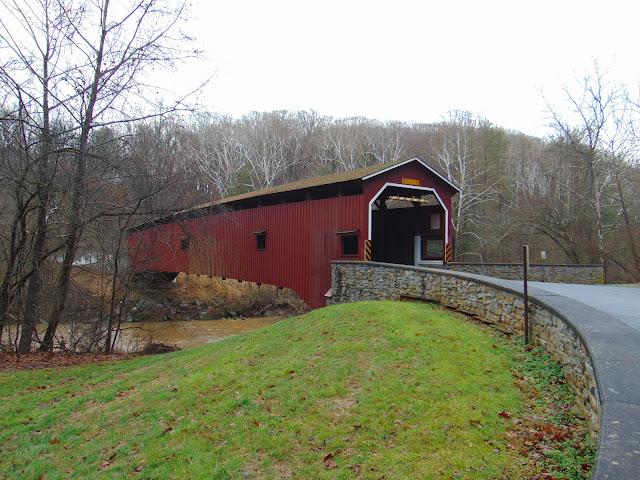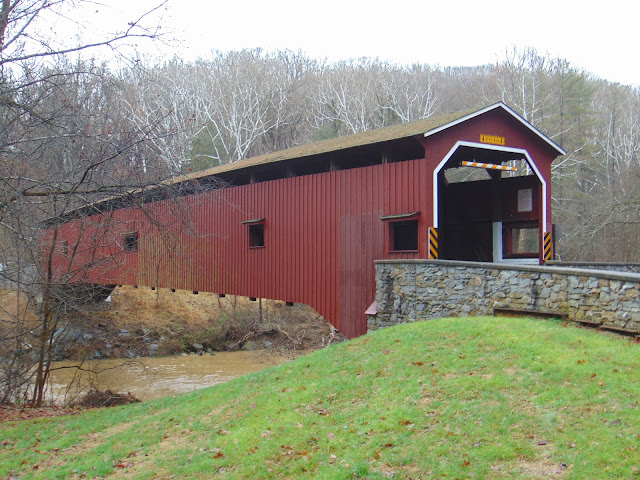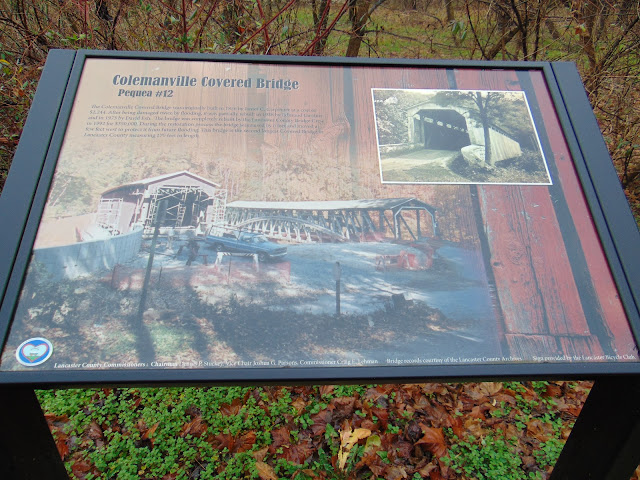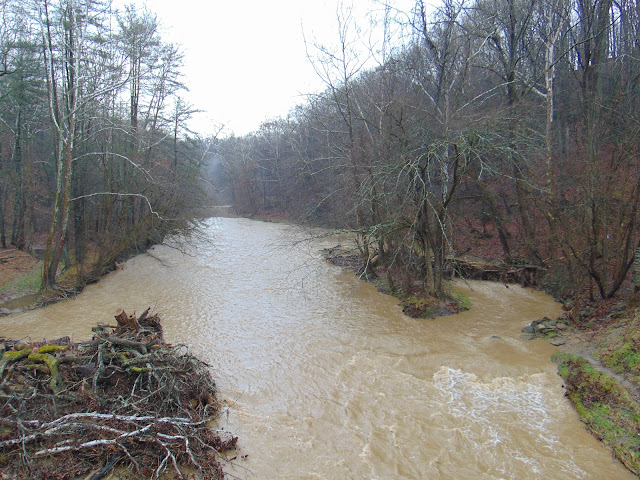The Colemanville Covered Bridge is the second longest covered bridges in Lancaster County and also one of the longer covered bridges in the entire Commonwealth of Pennsylvania, spanning 156 across the Pequea Creek on the border between Conestoga and Martic Townships. Given the alternate name of Pequea # 12 in Lancaster County's list of covered bridges, the Colemanville Covered Bridge was first built in 1856 by James C. Carpenter at the cost of $2,224. It is Lancaster County's second longest single span covered bridge that is still in use. The bridge has a single span with double Burr arch trusses design with the addition of steel hanger rods. The bridge deck is made from oak planks. Like most bridges in Lancaster County, the Colemanville Covered Bridge is painted red, which is the traditional color used for covered bridges in the county.
The bridge was partially rebuilt in 1938 and 1973 after flooding events caused damage to the covered bridge. Then in 1992, the Colemanville Covered Bridge was completely rebuilt at the tune of $350,000. During the rebuilding, the bridge was raised by six feet and moved slightly to the west in order to prevent future flooding from damaging the bridge. As a result, the bridge can be enjoyed for generations to come. I managed to visit the bridge on a day following plenty of rain and am happy to report that the bridge remained high and dry.
How to Get There:
Sources and Links:
Bridgehunter.com - Colemanville Covered Bridge 38-36-55
Galenfrysinger.com - Colemanville Covered Bridge
Visit Lancaster PA - Covered Bridges in Lancaster PA
Interesting Pennsylvania and Beyond - Colemanville Covered Bridge, Lancaster County
Update Log:
January 14, 2022 - Crossposted to Quintessential Pennsylvania - https://quintessentialpa.blogspot.com/2022/01/colemanville-covered-bridge.html











Comments